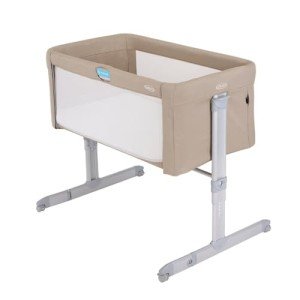The Importance of Bedside Cots for Infants: A Comprehensive Guide
As new parents embark on their parenting journey, they are challenged with a myriad of choices worrying their infant's sleep arrangements. Amongst these options, the bedside cot sticks out for its myriad of advantages. This article explores the significance of bedside cots, discusses their benefits and disadvantages, answers regularly asked concerns, and includes a comparative table to help parents make notified choices.
What Is a Bedside Cot?
A bedside cot is a sleep space designed to be placed beside the parents' bed, enabling easy access to the infant throughout the night. These cots include adjustable height settings, enabling them to line up with the height of the adult bed. Often, they can be attached securely to the bed or remain nearby, providing a safe yet available sleep environment for the baby.
Types of Bedside Cots
- Co-Sleeping Cots: These cots attach firmly to the parents' bed, enabling close distance while ensuring the baby has their own safe sleeping space.
- Freestanding Cots: These are positioned next to the bed however do not attach straight. Bedside Cot For Comfortable Sleep offer a convenient reach for feeding and reassuring.
- Portable Cots: These cots are light-weight and developed for travel, frequently including foldable styles and easy-transport capabilities.
Benefits of Using a Bedside Cot
Bedside cots offer a number of advantages that can boost both the infant's sleep experience and the parents' comfort. These include:
1. Enhanced Safety
According to the American Academy of Pediatrics (AAP), having the infant sleep in the exact same room as parents, without sharing the very same sleeping surface area, considerably reduces the danger of Sudden Infant Death Syndrome (SIDS). A bedside cot offers a safe space while preserving distance.
2. Easier Nighttime Care
When a baby is within arm's reach, feeding, diaper changes, and reassuring becomes far more convenient. Parents can rapidly relieve their infant without completely waking from sleep or leaving the bed.
3. Encouragement of Bonding
The close proximity provided by a bedside cot motivates bonding throughout nighttime feedings or comforting. This can cultivate a sense of security for the infant and assistance establish stronger psychological connections.
4. Space-saving Design
Lots of bedside cots are developed to be compact, making them perfect for small living spaces where a full-sized crib may not fit. They can be easily moved or kept when not in use.
5. Versatile Functionality
A lot of bedside cots can be changed in height and frequently include removable sides, making them adaptable for various uses as the kid grows or family requires modification.
Drawbacks of Bedside Cots
In spite of their advantages, there are some downsides to think about when choosing a bedside cot:
1. Minimal Lifespan
Bedside cots typically have a much shorter lifespan than basic cribs, frequently accommodating infants just approximately a specific weight or height. Parents may need to shift to a full crib faster than expected.
2. Stability Concerns
If not safely connected or properly positioned, a bedside cot may present safety issues. Bedside Crib For Attachment Parenting need to ensure that the cot is stable and well-aligned with the bed.
3. Change Period
Some infants might require time to get utilized to sleeping in a cot, especially if they are utilized to closer contact. Parents might need to be patient as their child adapts.
How to Choose the Right Bedside Cot
When selecting a bedside cot, parents must think about the following requirements:
- Safety Standards: Ensure the cot complies with all security guidelines.
- Adjustability: Look for height-adjustable features that align with your bed.
- Building and construction Material: Choose a cot that is sturdy and made of non-toxic materials.
- Alleviate of Use: Opt for styles that allow for one-handed operation when accessing the infant.
Table: Comparison of Popular Bedside Cots
| Feature | Co-Sleeping Cot | Freestanding Cot | Portable Cot |
|---|---|---|---|
| Attachment to Bed | Yes | No | No |
| Adjustability | Yes | Yes | Yes |
| Travel-Friendly | No | No | Yes |
| Life-span | 6-12 months | 18-24 months | 0-12 months |
| Rate Range | ₤ 150-₤ 300 | ₤ 100-₤ 250 | ₤ 50-₤ 150 |
Regularly Asked Questions (FAQs)
1. Are bedside cots safe for my baby?
Yes, when used properly and according to safety requirements, bedside cots are safe for infants. It is essential to make sure that the cot is safely positioned and does not position any danger of falling.
2. At what age can I transition my baby from a bedside cot to a crib?
A lot of parents transition their baby from a bedside cot to a crib in between 6 months and 2 years, depending upon the infant's development and convenience level.
3. Can I use a bedside cot for twins?
While some bedside cots are designed to accommodate more than one kid, the majority of are intended for single infants. Parents of twins might require to think about using separate cots.
4. How do I keep my bedside cot?
Routine cleansing, looking for wear and tear, and ensuring that all elements, such as security straps and bed mattress, are in good condition, can help preserve your bedside cot.
Selecting the ideal sleep plan for an infant is one of the numerous decisions that new parents deal with. A bedside cot offers unrivaled benefit and security while allowing for close adult interaction. Comprehending the benefits, disadvantages, and functions of bedside cots can empower parents to make the right option for their household's requirements. By weighing these factors together with safety preventative measures, parents can develop a nurturing sleep environment for their children.

